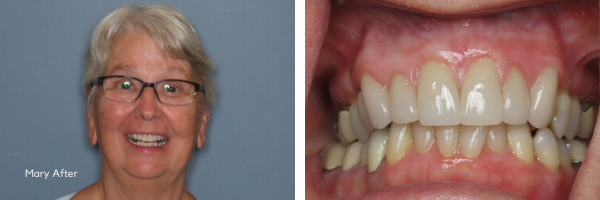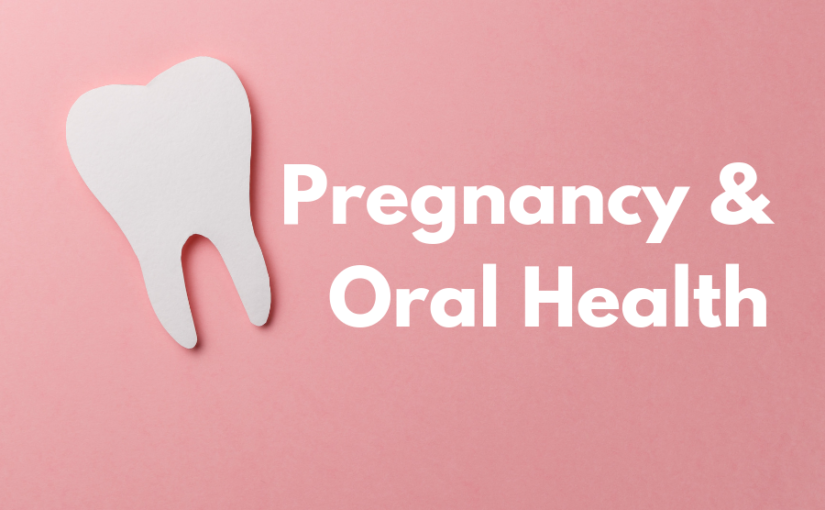How did this start?
Mary had composite restorations on her upper front teeth that she had needed to have replaced several times since they were first done in the 1970’s. She noticed they were beginning to look discolored and wanted to have them replaced with something that would offer better long-term predictability. To find out her options, Mary went through the records process with Dr. Jeff. This process allows our doctors to determine the best course of treatment using models, x-rays, and photos of the patient’s teeth, gums, and bite.

What did she want?
While Mary was happy with the overall shade of her teeth, she had noticed some areas of discoloration that she wanted to correct. Mary was also concerned that her teeth appeared crowded and was hoping to improve their appearance.
What was involved?
Dr. Jeff recommended that Mary go through the records process so that he could asses the current health of the teeth and gums, and the function of her jaw and muscles. After the records were taken Dr. Jeff was able to formulate a treatment plan for Mary that would address her concerns with the appearance and position of her teeth, which he presented at her consult appointment. Dr. Jeff recommended Mary start with an orthodontic consult to learn about possible options for changing the position of her teeth to alleviate the crowding. Dr. Jeff explained that it would be ideal to move her teeth before doing any restorations on her upper teeth as it would allow him to be more conservative when preparing the teeth and would offer better long-term predictability. He then recommended Mary replace her existing composite restorations on her upper front teeth with porcelain crowns, as they would be stronger and more durable than composites and would give her teeth the consistent shade she desired.
After a lot of consideration, Mary decided to move forward with restoring her front teeth without doing orthodontics. Mary was not interested in taking the time it would need to move her teeth and she felt she could be happy with her results using restorations alone to improve her smile. Before starting her treatment, Dr. Jeff worked with a local lab to fabricate a wax mock-up of Mary’s new teeth to show her what they would look like. Mary was very happy with how they looked with the mock-up, and over the course of two appointments, Dr. Jeff prepared and restored her teeth with the final porcelain crowns.
What does she think?
Mary is excited to say that she likes her teeth much better now that she had them re-done. She thought the procedures were fast and professional. She would recommend the procedures to anyone as she notes “It wasn’t as bad as I was afraid it would be.” Mary loved working with our team and feels more confident with her brighter, straighter smile! Congratulations Mary! We love working with patients like you!

If you’ve been thinking about improving your smile, contact us today to learn more about what we can do for you!












